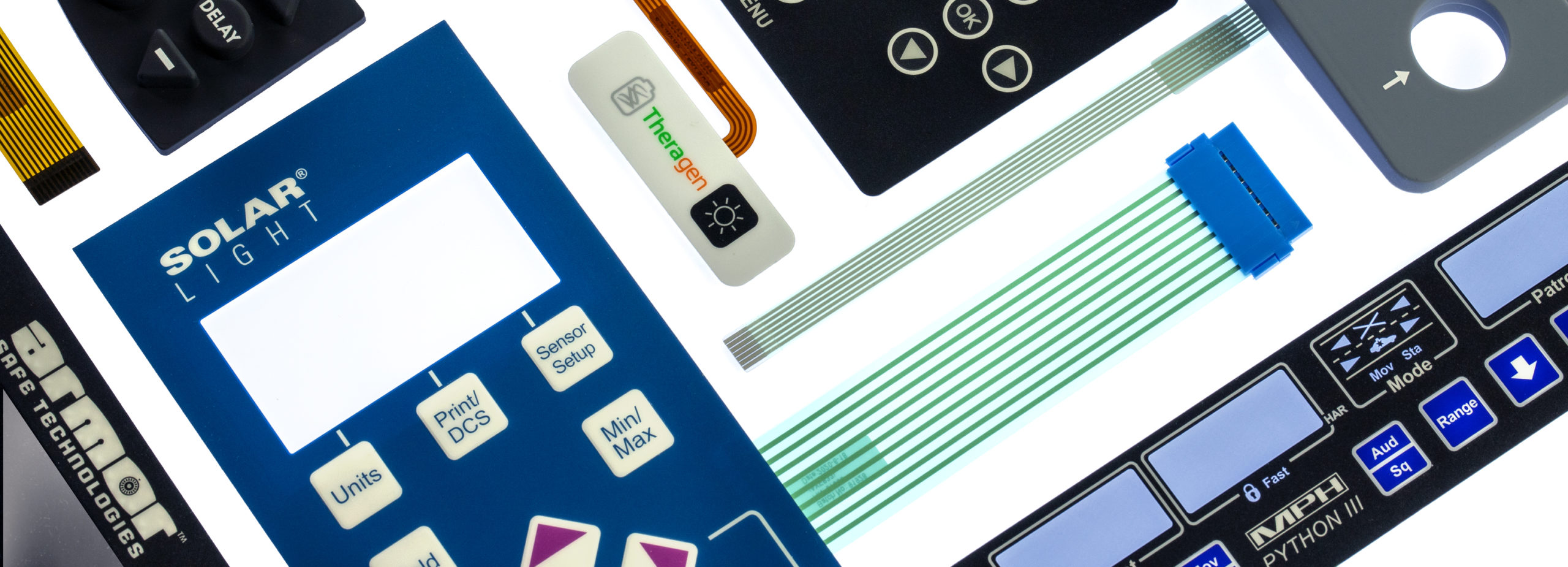The Role of Membrane Switches in Enhancing Device Functionality
The Role of Membrane Switches in Enhancing Device Functionality
Blog Article
Recognizing Membrane Switches Over: The Key to Trustworthy and resilient Controls

What Are Membrane Buttons?
Membrane layer buttons are a sophisticated option in the realm of interface modern technology, combining functionality and style effortlessly. These tools act as a user interface between users and electronic systems, integrating numerous parts right into a portable layout. Typically constructed from versatile, slim layers of products, membrane layer buttons are created to reply to touch, allowing customers to interact with machinery and digital tools properly.
The key elements of a membrane button consist of a published circuit layer, visuals overlay, and a spacer layer that avoids unintentional activation. The visuals overlay can be customized to reflect brand identity or customer choices, improving aesthetics while ensuring use. Membrane layer switches are typically used in different applications, including clinical tools, consumer electronics, and commercial devices, owing to their durability and resistance to ecological aspects such as wetness and dust.
Among the vital benefits of membrane buttons is their capacity to endure wear and tear, making them excellent for high-traffic atmospheres. Additionally, they are light-weight and need minimal area, permitting cutting-edge styles in product growth. In general, membrane layer changes stand for a reliable and practical selection for modern digital interfaces, weding technology with user-centric layout principles.
Exactly How Membrane Changes Job
The operation of membrane layer switches over hinges on an easy yet reliable device that translates individual input right into digital signals. When a user presses the switch, the top layer warps, allowing a conductive aspect in the circuit layer to make call with an equivalent conductive pad on the bottom of the visuals overlay.
The design of membrane switches can vary, however they frequently include domes or responsive elements to supply comments to the customer, boosting the total experience - membrane switch. The products made use of in membrane layer buttons, such as polyester or polycarbonate, add to their resilience and resistance to environmental elements, including wetness and dust. In addition, the printed circuits are normally encapsulated, which protects them from deterioration over time.
Benefits of Membrane Layer Switches

Additionally, membrane switches are known for their sturdiness. Built from durable products, they are resistant to dust, wetness, and physical wear, which substantially expands their life-span contrasted to standard mechanical buttons. This durability makes them particularly suitable for high-traffic environments and applications requiring longevity.
An additional substantial advantage is the convenience of cleansing and upkeep. The smooth surface of membrane switches minimizes dirt buildup and is often unsusceptible spills, making them ideal for setups that need regular sanitization.
Moreover, membrane buttons use a structured profile, leading to a thinner design that can be integrated into various tools without advice including bulk. This feature not only enhances the visual charm but also adds to a much more ergonomic product layout.
Applications of Membrane Buttons
Versatile and straightforward, membrane buttons find applications throughout a variety of sectors, including medical devices, customer electronics, and commercial equipment. In the clinical field, these switches are indispensable to gadgets such as analysis devices, patient tracking systems, and infusion pumps, where dependability and convenience of cleaning are critical. Their capability to keep and hold up against rough atmospheres capability makes them optimal for such applications.

In consumer electronic devices, membrane switches are utilized in items like microwaves, washing machines, and remote controls - membrane switch. Their smooth layout allows for instinctive interface, improving the total individual experience while providing toughness and resistance to tear and wear
Industrial devices additionally takes advantage of membrane layer switches, particularly in control panels for machinery and automation systems. These switches use defense versus dirt and dampness, guaranteeing constant efficiency in difficult settings. Their here are the findings personalized features enable makers to customize them to specific operational needs, enhancing efficiency and functionality.
Choosing the Right Membrane Layer Switch
When selecting a membrane button, it is necessary to consider numerous variables that affect performance and suitability for specific applications. The key factors to consider include environmental problems, responsive feedback, resilience, and design specifications.
First, analyze the operating setting; switches exposed to moisture, chemicals, or severe temperature levels need specific products to make sure longevity and capability. Next, assess the need for responsive feedback. Relying on individual interaction, some applications might benefit from a responsive reaction to confirm activation, while others might prefer a non-tactile layout for aesthetic reasons.
Resilience is an additional vital factor; membrane layer switches must be developed to stand up to frequent use, impacts, and abrasion. Guarantee the picked switch can endure the anticipated lifecycle, particularly in high-usage circumstances.

Conclusion
In conclusion, membrane changes offer as important parts in the design of reputable and sturdy control systems across various markets. The adaptability of membrane changes enables for customized remedies that fulfill specific operational needs, strengthening their relevance in contemporary innovation.
Membrane changes represent an important aspect of modern interface design, blending performance with durability in different applications.Membrane switches are a sophisticated service in the realm of user interface technology, combining functionality and design perfectly. Typically constructed from flexible, thin layers of products, membrane additional reading layer buttons are created to react to touch, allowing users to interact with machinery and digital tools successfully.
The style of membrane switches can differ, however they commonly integrate domes or tactile elements to give responses to the individual, improving the overall experience.In final thought, membrane layer changes serve as crucial parts in the style of reliable and durable control systems throughout numerous markets.
Report this page